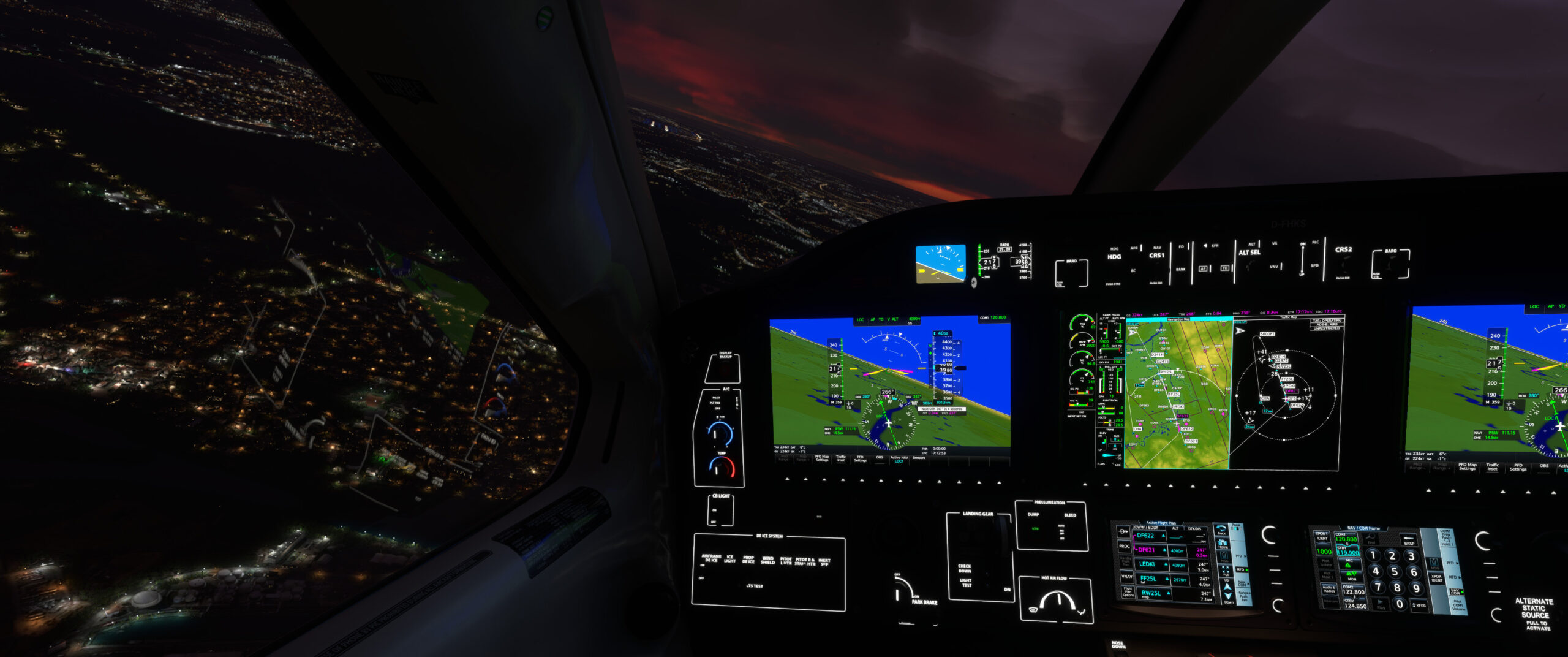
In the previous post back in January on my flight simulator adventures, I’ve described my step from a small propeller plane to the somewhat more powerful turbocharged Daher TBM 930. While that doesn’t give a lot of benefits from a Visual Flight Rules (VFR) perspective, having a faster plane for Instrument Flight Rules (IFR) flying is a great thing, as it offers additional range and hence, more controlled airports to fly into. This is particularly helpful when flying in the Vatsim environment, where ‘real virtual’ air traffic controllers keep you save in the sky, but only cover select larger airports. The catch so far: The Garmin G3000 flight management system (FMS) has lacked a number of important features so far, which made IFR flying quite a bit more challenging, particularly in high workload situations. So I was really delighted that in the update in January 2003, the G3000 avionics got a major overhaul. Let’s have a look at that.
I was quite amazed that pretty much all limitations I noticed after flying with the Garmin G3000 FMS for some time and comparing its features in the simulator with the system in the real world where addressed in this major update. And just in case you are wondering how I can compare the G3000 in the simulator with the G3000 in the real world: Youtube is your friend and the TBM 930 Pilot Operating Handbook (POH) as well as the G3000 manual for operation in the real world are publicly available and go into many details of how the system looks and is used in the real world.
So what’s been upgraded? First, the functionality of the ‘multifunction display’ (MFD), which is the screen in the middle of the cockpit, has been significantly updated. The map view is now on the same level as on the real system, and the view can now be split between map and route. Also, a lot of additional features have been activated that can now be accessed via the touch input controller in the lower middle of the console, and it’s now possible to program waypoint holds, which are quite demanding to fly by hand, particularly when lots of aircraft are above and below you in the hold also waiting to land at a busy airport. Also, the autopilot can now fly a ‘missed approach’, which again is very welcome support in a stressful part of the flight when you’ve just botched the landing or that thick fog made the runway invisible and there is a need to go around. And then there are smaller things like now being able to switch barometric pressure between inches of mercury used in the US and hectopascals used in the rest of the world, approach minimums are now shown and announced, so aborting an approach when the weather is too bad for landing has also been implemented.
Some smaller bugs are still in the simulator though, or have been newly introduced. For some strange reason, warnings and alerts do not trigger a tone anymore. Makes me wonder, why this was not noticed!? Also, it’s possible to damage the plane by flying with too much throttle at lower altitudes, which results in torque in excess of 100%. While the torque meter goes red, there is no indication on the CAS (Crew Alerting System) and no audible alert. I do not know but I assume that in the real system, there would at least be an audible alarm and the electronics would prevent the engine from being damaged.
Overall, however, I’m amazed how much work keeps flowing into that simulator and the next ‘world update’ has also been released a few days ago, which brought default scenery improvements for many airports and other non-plane related updates. Fantastic!